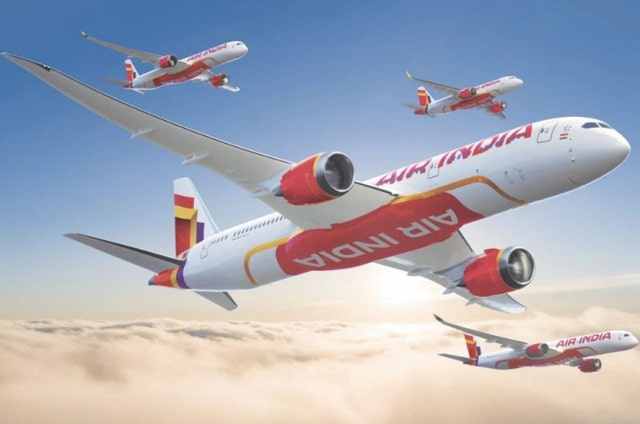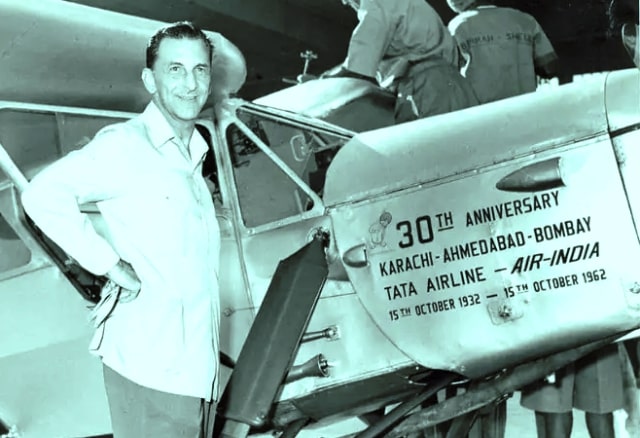There is magic about glamour, which, however, is an abstraction. It could relate to an exclusive line of clothing, haut monde, destinations beyond the reach of hoi polloi or to stretch it to the maximum owning an airline. It is because of the indefinable glamour factor some high net worth individuals in every part of the world would from time to time be in this cash guzzling venture of flying people and cargoes from one point to another. Legend has it that deep pocket is a precondition to owning an airline.
But as it has been seen over the decades, owning big money may facilitate an entry into the industry, but access to funds (read capacity to borrow and finding favour with banks and one’s own money) will not underpin success or be an insurance against disastrous consequences. So many privately owned airlines have perished over the decades and dreams of promoters turning sour.
Who could believe that Trans World Airlines (TWA), which in the 1980s was carrying half of all passengers between the US and Europe would land in bankruptcy in January 1992 leading to winding up of operations. TWA owning proved to be ruinous for the reclusive Howard Hughes and thereafter the enormously rich American businessman and investor Carl Celian Icahn. The airline had been on ropes for a long time, not least because Icahn went on loading the company with debts – this remains the bugbear of many operating airlines – and refusing to buy new, more efficient planes. No doubt, for the highly egoistic corporate raider Icahn filing of bankruptcy of TWA was a hugely humiliating experience. He later told the Washington Post: “I’ve lost on TWA; it has been the worst investment I’ve made in the last decade.”
Not TWA alone, but the iconic Pan Am, which had to its credit a series of firsts in the world aviation industry, including pressing into service wide body 747 jumbo, was done in principally by a series of oil crises, introduction of the US Airline Deregulation Act giving fillip to competition and finally the 1988 Lockerbie disaster killing 270 people. Though never a flag carrier of the US, Pan Am had a unique identity, representing the country’s leadership of global air travel. That, however, was not enough to negotiate the headwind that would come Pan Am’s way at regular intervals.
The British airline industry too had a chequered history as the events leading to privatisation of British Airways, resulting from merger of BOAC and British European Airways in 1974, under the oversight of prime minister Margaret Thatcher would show. Thatcher, as she made it clear on more than one occasion, never had faith in government ownership of businesses. The Conservative government that she headed presided over the privatisation of number of industries and utilities from steel to railways and from electricity to water.
What supposedly motivated privatisation were hopes of employee productivity improvement, better management practices under private ownership, sparing government of debts and encouraging wider share ownership. Japan Airlines was privatised more or less at the same time as BA. From time to time, governments, most notably in Europe, have divested ownership in airlines in favour of the private sector. At the same time, governments have retained significant ownership in Finnair, SAS, Air Serbia and Turkish Airlines. In Air France-KLM, the government has retained minority holding. Interestingly, Moscow has divested as much as 49 per cent of national carrier Aeroflot.
There is a lot of pull for governments to get out of airline business altogether, thanks to mounting debts, ballooning of losses and growing trade union pressure. Then the skies are coming to be dominated by slick no frills carriers operating largely domestically and the likes of Emirates, Qatar, Etihad and Gulf Air with their hubs in the Middle East expanding their global networks all the time and in the process increasing their market share. The writing is there on the wall that state involvement in airline running will bring miseries for all stakeholders.
ALSO READ: Tata Buys Wings For Maharajah
Air India is an interesting story. It was a modest size airline flying to a few foreign destinations before New Delhi stepped in as the sole owner some years down the Independence. At the same time, the country in the 1950s had a number of small airlines operating domestic routes. Whatever critics may say their nationalisation in 1953 made sense. They were not in a position to mobilise funds to acquire a modern fleet and critical mass, which alone could underwrite profitable operations. Jawaharlal Nehru knew what kind of ambition the founder of Air India JRD Tata had for the airline and though the ownership vested with the government, Nehru was not to ask for a change in the helmsman. So JRD was free to draw on the marketing knowledge of his lieutenant Bobby Kooka to make Air India among the preferred airlines in the world and unarguably the best in Asia.
All this became possible because bureaucrat-politician clique would not dare interfere in the airline running as long as Tata remained chairman. Even though Tata group no longer had any financial stake in Air India, JRD would find all the time for something he was obsessively in love. Beyond Nehru, JRD enjoyed full freedom in growing Air India the way he wanted during the prime ministership of Lal Bahadur Shastri. But bureaucrat-politician clique had the last laugh when an antagonistic Morarji Desai saw the easing out of the no-nonsense JRD. Soon thereafter Kooka was shown the door. Bureaucrats were only waiting for the exit of JRD followed by Kooka, who was credited with giving Air India the Maharaja mascot and lured droves of foreigners to experience Indian hospitality on board, to seize control of the airline.
Even then, the rich legacy that JRD left behind, including able managers at all levels saw Air India doing well for a long time. Interestingly, the performance would peak when somebody from the private sector – in this case, YC Deveshwar of ITC – would be drafted to lead the airline. The farsighted Prime Minister Narasimha Rao would commission the services of legendary manager Russi Mody to head both Air India and Indian Airlines. Such prime ministerial interventions would usher in a brief spring in Air India. In retrospect two moves that did considerable damage to finances, services and operational efficiency of the airline are: decision to leave the charge of running the Air India to members of Indian Administrative Service and merger of Air India and Indian Airlines. Incidentally, Air India started suffering losses every year since the domestic carrier’s ill-advised merger with it in 2007-78. The inevitable result was mounting losses requiring the government to keep the merged entity to limp along with financial support.
The bruised airline in every sense with market share down to around 10 per cent compared with over 60 per cent for private group Indigo was passed on to the Tata group in January 2022. A few months ahead of 100 per cent sale, Air India had piled up debts of Rs61,562 crore, but 75 per cent of that was transferred to a special purpose vehicle of the government before its handover to the Tata group. In the past, the government made several attempts to sell the major portion of Air India equity to a private group but without success.
The compulsion for privatisation was summed up succinctly by a government spokesperson in the following way: “We want to finish the handover quickly, because we are paying Rs20 crore a day to run the airline. The new owner will need to put in a lot of capital because they have to do capital expenditure to improve aircraft, refurbish and give new orders for aircraft. Only then they may be able to turnaround.”
With this acquisition, the group now has four airlines: Air India, Air India Express, Vistara and Air Asia India and according to Air India CEO Cambell Wilson, “The four together have a market share close to 30 per cent. But we will be adding aircraft and expand capacity considerably.” What Wilson will emphasise is that the group is not to chase capacity for the sake of it. But it will continue to build capacity to “ensure that we are a credible significant competitor.” If all things go according to plan, Air India transformation will happen over a period of five years. Getting rid of historical baggage will be no less a challenge than to create a new airline that will do JRD proud.


